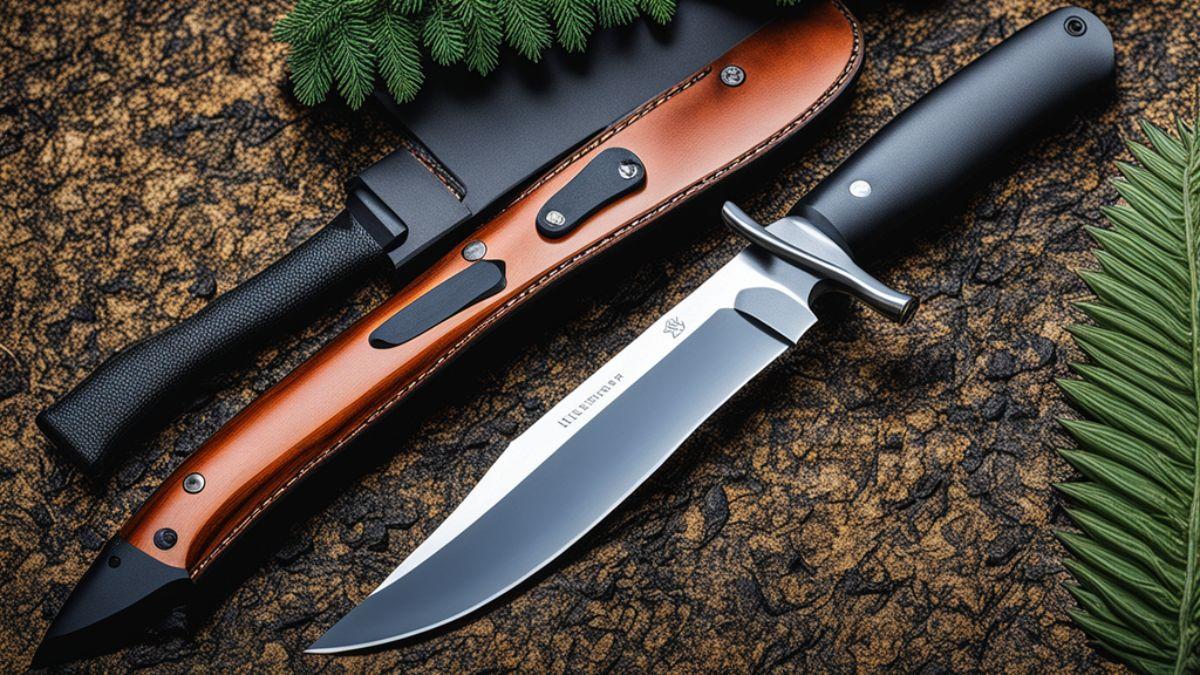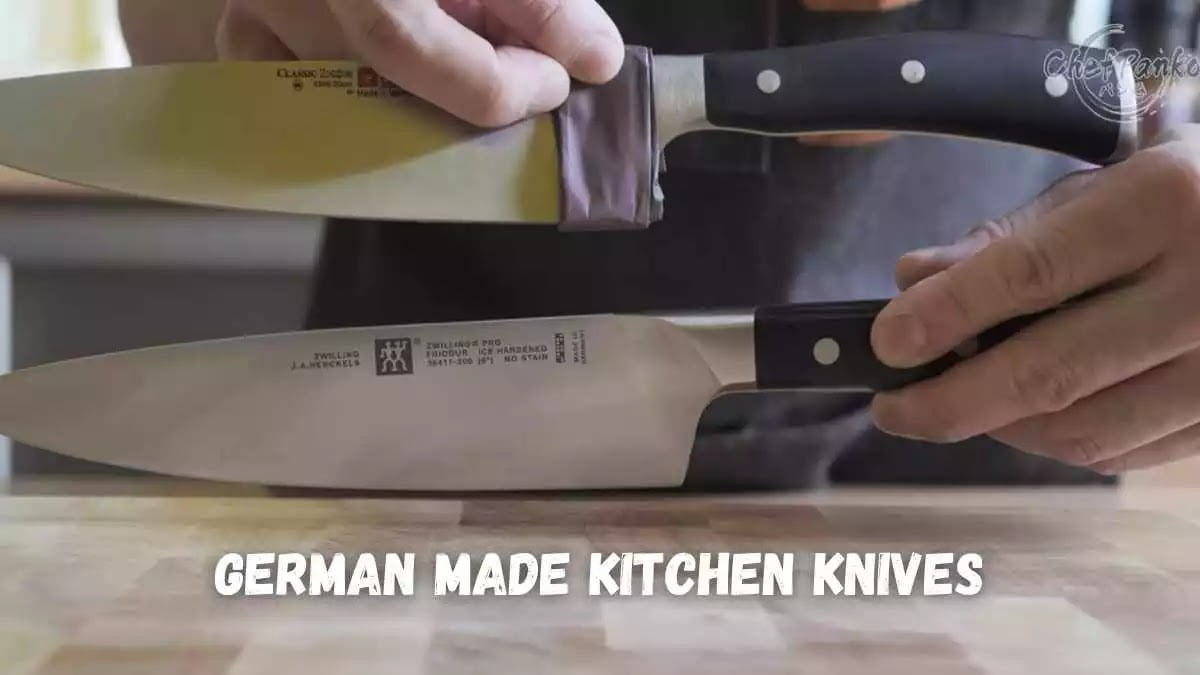We may earn money or products from the companies mentioned in this post.
I’m sure you’ve seen those small knives with short, pointed blades in your kitchen or when perusing the aisles of a culinary shop. Paring knives are what they’re called, and despite their small size, they’re really practical tools. Don’t worry if you’re unsure of the precise purposes of paring knives or how they differ from other kinds of knives. With this comprehensive guide to paring knives, we’ve got you covered—from their various applications to how to choose a premium one that will last you for many years. By the time this is over, you’ll be confidently using your paring knife and doing a variety of culinary duties with ease. Now that you’ve got your preferred munchie, sit comfortably, and let’s get intimate with paring knives.
What Is a Paring Knife?
A paring knife is a small, lightweight knife designed for precision cutting. Unlike chef’s knives meant for chopping, paring knives are ideal for delicate tasks where control is key.
What do you use a paring knife for?
Paring knives excel at detail work like:
So you see, paring knives are the ultimate multi-tasking tools in the kitchen. Keep one on hand; you’ll wonder how you ever lived without it!
Common Uses for Paring Knives
For activities requiring precise cutting in the kitchen, paring knives are a must. You can easily tackle delicate tasks with them because of their tiny size and sharp blade. The following are some common applications for paring knives:
Fruit peeling and slicing Peeling apples, slicing other soft fruits, hulling strawberries, and chopping segments of citrus are all tasks that paring knives excel at. Their thin blades and sharp points allow you to go into tight spots and navigate around bends.
veggies prepared. For slicing mushrooms, dicing garlic and shallots, removing corn kernels from the cob, and chopping fresh herbs, paring knives are perfect. With these, you have more control and accuracy than with a bigger knife.
Chocolate with cheese. A paring knife is an ideal instrument for slicing soft cheese, shaving chocolate, or cutting chocolate for recipes. Because they’re little, you can cut them into thin, uniform slices.
Additions. Use your paring knife to create curls or shavings of vegetables, such as carrots or cucumbers, for garnish. Its pointed edge makes it easy to cut and curl ornamental pieces.
hands-on cutting. Rather than being used on a cutting board, paring knives are meant to be sliced and peeled by hand. With one hand, hold the meal, and use the other to chop it. Until you have the feel of it, cut very gently and with extreme caution.
Paring knives may function as an extension of your hand in the kitchen with a little effort. You can use this little knife for many tasks if you keep it sharp and ready.
Types of Cuts Made Easy With a Paring Knife
A paring knife is ideal for precision cutting tasks that require control and accuracy. Its small size and sharp blade allow you to make quick work of various cuts for a wide range of ingredients.
Slicing
Use your paring knife to slice small fruits and vegetables like strawberries, grapes, mushrooms, and shallots. Make thin, even slices by holding the ingredients in place with your non-dominant hand and using a smooth slicing motion. A sharp paring knife will glide right through, creating neat, clean cuts.
Dicing
To dice ingredients into small, uniform cubes, first slice the item into thin strips, then cross-cut the strips into cubes. A paring knife gives you greater control, so you can dice delicate ingredients like herbs without bruising them.
Peeling
A paring knife’s sharp tip is perfect for peeling the skin from produce like apples, cucumbers, carrots, and potatoes. Grip the end of the ingredient in one hand and slide the knife along the surface using light, quick flicks of the wrist to remove the skin. Be very careful when peeling round items like apples and potatoes.
Pitting
Remove the pit from stone fruits like cherries, peaches, and plums using the tip of your paring knife. Pierce the flesh with the tip to locate the pit, then cut around it while twisting the knife to loosen the pit from the flesh. Gently pry out the pit, and you’re done.
Trimming and Tourne
Paring knives are ideal for trimming stems, hulling strawberries, cutting eyes out of potatoes, and turning vegetables into barrel shapes. Their sharpness and precision make quick work of these tasks.
With some practice, a paring knife can become an extension of your hand for crafting all kinds of cuts and shapes with ease. Keep your paring knife sharp, and you’ll find yourself reaching for it again and again in the kitchen.
Selecting the Best Paring Knife for Your Needs
When choosing a paring knife, consider how you plan to use it and your own cutting skills. The right paring knife for you depends on these factors:
Blade Shape
The spearpoint and sheepsfoot blade forms are the two most popular types. With their sharp edge, spear point blades are perfect for slicing and peeling. Sheepfoot blades are safer to chop with because of their rounded point. Based on how exact you need to be, choose your choice.
Blade Length
The blades of most paring knives are between two and four inches long. A 2- to 3-inch shorter blade works well for coring, peeling, and slicing tiny fruits. A 3- to 4-inch blade is more adaptable and strong enough for heavier-duty cutting. Some chefs or jobs may find longer blades difficult to handle.
Blade Material
For optimal quality and functionality, go for a high-carbon stainless steel knife. This material is stain-resistant and maintains an edge nicely. Ceramic blades are more brittle, yet they may still be highly sharp. Steer clear of inexpensive blades made of inferior steel since they corrode more quickly and need to be sharpened more often.
Handle Design
Look for a knife with an ergonomic handle that feels comfortable and secure in your hand. Popular styles include the pistol grip handle, which has finger contours, and the blade grip handle, which has a narrower profile. A slip-resistant handle material like wood, plastic, or rubber will give you more control.
Additional Features
Some paring knives offer useful extras like a finger guard to protect your hand, a non-slip handle for safety, or a sheath or scabbard for storage. While not essential, these features may increase the longevity and usability of your knife.
With the right paring knife selected for your needs, you’ll be peeling, slicing, and dicing like a pro in no time. Take your time to evaluate the options and choose a knife you’ll enjoy using for many meals to come.
Proper Care and Maintenance of Paring Knives
To keep your paring knives in top working condition and safe to use, proper care and maintenance are important. Here are some key things you should do:
Hand Washing
It’s best to hand wash paring knives after each use. Don’t put them in the dishwasher, where they can get dull or damaged. Gently wash knives with a mild detergent and warm water, then dry them immediately to prevent rusting. Make sure the entire knife, including the handle, is fully dry when done.
Honing
Honing removes burrs and realigns the edge of the blade to keep it sharp. Use a honing steel to slide the blade of the knife against it using even pressure on both sides of the blade. Do this before each use for the best results. Honing steels come in a range of grits; a medium or fine grit is good for most paring knives.
Sharpening
Over time, honing will no longer be effective as the blade becomes dull. Have your paring knives professionally sharpened once a year or so to restore the edge. Look for a professional knife sharpening service that uses whetstones and water for the sharpest edge. Avoid pull-through sharpeners, which can damage knives.
Proper Storage
Store your paring knives in a wooden knife block, on a magnetic rack, or in a sheath. This will protect the blades from damage and keep them securely contained when not in use. Never just throw paring knives into a drawer where the blades can get dull, bent, or cause injury.
By properly caring for your paring knives through hand washing, honing, sharpening, and safe storage, you’ll keep them in prime working condition for many years of use. With the right maintenance, a good set of paring knives can last a lifetime.
Conclusion
Well, there you have it—everything you need to know about paring knives and how to use them. These small but mighty kitchen tools may be compact, but they pack a punch and can accomplish so much. Now that you’re armed with the proper techniques, go forth and dice, peel, trim, and garnish to your heart’s content. Your meals will be all the better for it. And remember, with a quality paring knife in your hands and some practice, you’ll be slicing and dicing in no time. Bon appetite!
More Best Kitchen Knives recommendations







